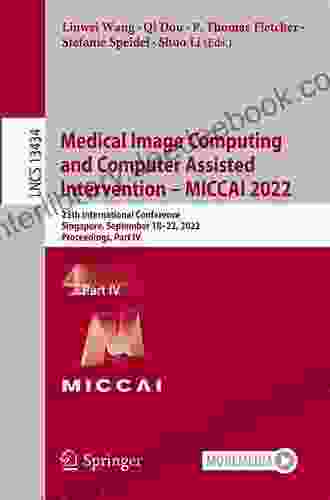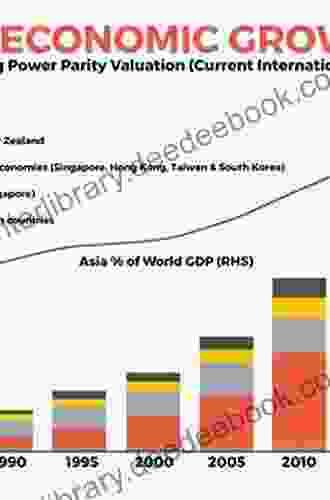Industrial Harmony in Modern Japan: A Tale of Collaboration and Consensus

Japan has long been renowned for its industrial prowess, boasting a global reputation for quality, efficiency, and innovation. This success is not merely a product of technological advancements but also stems from a unique culture of industrial harmony that has characterized Japanese society for centuries. This article delves into the intricate tapestry of industrial relations in modern Japan, exploring the historical roots, key principles, and contemporary challenges that shape this distinctive system.
5 out of 5
| Language | : | English |
| File size | : | 446 KB |
| Text-to-Speech | : | Enabled |
| Screen Reader | : | Supported |
| Enhanced typesetting | : | Enabled |
| Print length | : | 210 pages |
| X-Ray for textbooks | : | Enabled |
Historical Roots
The origins of Japanese industrial harmony can be traced back to the feudal era, where the concept of wa (harmony) was deeply ingrained in societal norms. In the workplace, this principle manifested in the paternalistic relationship between employers and employees, known as oyabun-kobun (parent-child). Employers were expected to provide not only economic security but also guidance, mentorship, and a sense of belonging to their workforce.
Key Principles
Japanese industrial harmony is anchored upon several key principles:
- Consensus-Based Decision-Making: Instead of adversarial negotiations, Japanese companies foster a spirit of cooperation and consensus-building. Labor unions and management work together to reach decisions that benefit both parties.
- Lifetime Employment: Traditionally, large Japanese companies offered lifetime employment to their employees, ensuring job security in exchange for loyalty and dedication. This practice fostered a sense of stability and commitment among the workforce.
- Company-Wide Unionization: Unlike many Western countries, Japanese labor unions are typically organized at the company level, rather than by occupation or industry. This structure promotes solidarity and shared interests within the workplace.
- Emphasis on Education and Training: Japanese companies invest heavily in employee training and development, recognizing that a skilled and knowledgeable workforce is essential for sustaining industrial harmony.
Benefits of Industrial Harmony
The Japanese model of industrial harmony has yielded numerous benefits for both businesses and employees:
- Increased Productivity: Cooperative labor-management relations lead to higher levels of trust and motivation, resulting in improved productivity and efficiency.
- Lower Absenteeism and Turnover: Workforce stability and job security reduce absenteeism and employee turnover, contributing to a more stable and productive work environment.
- Enhanced Innovation: A culture of consensus-building and open communication fosters creativity and innovation, as employees are encouraged to share ideas and collaborate on problem-solving.
- Social Stability: Industrial harmony promotes social cohesion by providing workers with a sense of belonging and purpose, contributing to a more peaceful and stable society.
Challenges in Modern Times
Despite its strengths, industrial harmony in Japan has faced challenges in recent decades:
- Globalization and Automation: Economic globalization and technological advancements have eroded the traditional foundations of the Japanese employment model, leading to increased job insecurity and the rise of non-regular employment.
- Demographic Changes: Japan's aging population has implications for industrial harmony, as the shrinking workforce presents challenges for maintaining job security and productivity.
- Changing Values: As Japanese society undergoes cultural shifts, younger generations may prioritize individual career advancement over collective harmony, posing potential challenges to the traditional consensus-based approach.
- Increased Labor Market Flexibility: The government's efforts to increase labor market flexibility have led to a relaxation of lifetime employment practices, leaving some employees vulnerable to layoffs and lower wages.
Future Prospects
The future of industrial harmony in Japan remains uncertain as the country navigates these challenges. Some experts argue that the traditional model is outdated and must evolve to remain viable in the 21st century. Others emphasize the resilience and adaptability of Japanese society and suggest that industrial harmony will continue to be a cornerstone of the country's economic success.
Industrial harmony has been a defining characteristic of Japan's economic development, fostering cooperation, productivity, and social stability. While challenges exist in the modern era, the core principles of consensus-building, lifetime employment, and company-wide unionization continue to shape industrial relations in Japan. The extent to which this distinctive model will adapt and evolve in the face of emerging challenges remains to be seen. However, its legacy as a model of industrial harmony and a driver of economic growth is undeniable.
5 out of 5
| Language | : | English |
| File size | : | 446 KB |
| Text-to-Speech | : | Enabled |
| Screen Reader | : | Supported |
| Enhanced typesetting | : | Enabled |
| Print length | : | 210 pages |
| X-Ray for textbooks | : | Enabled |
Do you want to contribute by writing guest posts on this blog?
Please contact us and send us a resume of previous articles that you have written.
 Book
Book Chapter
Chapter E-book
E-book Magazine
Magazine Newspaper
Newspaper Bookmark
Bookmark Shelf
Shelf Glossary
Glossary Bibliography
Bibliography Foreword
Foreword Preface
Preface Synopsis
Synopsis Annotation
Annotation Manuscript
Manuscript Scroll
Scroll Codex
Codex Tome
Tome Bestseller
Bestseller Classics
Classics Library card
Library card Narrative
Narrative Reference
Reference Encyclopedia
Encyclopedia Dictionary
Dictionary Narrator
Narrator Resolution
Resolution Librarian
Librarian Card Catalog
Card Catalog Borrowing
Borrowing Archives
Archives Study
Study Reserve
Reserve Academic
Academic Rare Books
Rare Books Special Collections
Special Collections Interlibrary
Interlibrary Literacy
Literacy Study Group
Study Group Thesis
Thesis Textbooks
Textbooks A C Drexel
A C Drexel Armand Rosamilia
Armand Rosamilia Saul Bellow
Saul Bellow Elliot Haspel
Elliot Haspel Eve Silver
Eve Silver Mark Doty
Mark Doty Andrew Hitz
Andrew Hitz Lang Lang
Lang Lang Steve Chapman
Steve Chapman J E Murphy
J E Murphy Frank Fiorenza
Frank Fiorenza Marc Freedman
Marc Freedman Kimberly Wilmot Voss
Kimberly Wilmot Voss Megan Rohrer
Megan Rohrer Clinton J Dawes
Clinton J Dawes John Lucas
John Lucas Bob Marley
Bob Marley T Y Somerville
T Y Somerville Paul Lisicky
Paul Lisicky Robert Shenker
Robert Shenker
Light bulbAdvertise smarter! Our strategic ad space ensures maximum exposure. Reserve your spot today!

 Pat Mitchell23rd International Conference Lima Peru October 2024: Proceedings, Part Notes...
Pat Mitchell23rd International Conference Lima Peru October 2024: Proceedings, Part Notes...
 Jackson BlairUnveiling the Treasure Trove: A Comprehensive Guide to The Hymn Fake Book...
Jackson BlairUnveiling the Treasure Trove: A Comprehensive Guide to The Hymn Fake Book... Braeden HayesFollow ·16.8k
Braeden HayesFollow ·16.8k E.M. ForsterFollow ·12.3k
E.M. ForsterFollow ·12.3k Leo TolstoyFollow ·3.1k
Leo TolstoyFollow ·3.1k Elmer PowellFollow ·11.1k
Elmer PowellFollow ·11.1k Jake PowellFollow ·4.3k
Jake PowellFollow ·4.3k DeShawn PowellFollow ·4.6k
DeShawn PowellFollow ·4.6k Braden WardFollow ·17.5k
Braden WardFollow ·17.5k Manuel ButlerFollow ·16.1k
Manuel ButlerFollow ·16.1k

 Bo Cox
Bo CoxDiscover the Enchanting Allure of Collingwood, Ontario,...
Nestled amidst the breathtaking landscape of...

 Ralph Ellison
Ralph EllisonThe Street of Clocks Poems: A Poetic Journey Through Time
Welcome to The Street...

 Dwight Blair
Dwight BlairCritical Political Economy of the Middle East and North...
The Middle East and...

 Deion Simmons
Deion SimmonsPerfect Strategies For Painting Amazing Marine Creatures...
Gouache is a...

 Hugh Bell
Hugh BellThe American Republic: Constitution, Tendencies, and...
The American Republic,...
5 out of 5
| Language | : | English |
| File size | : | 446 KB |
| Text-to-Speech | : | Enabled |
| Screen Reader | : | Supported |
| Enhanced typesetting | : | Enabled |
| Print length | : | 210 pages |
| X-Ray for textbooks | : | Enabled |










